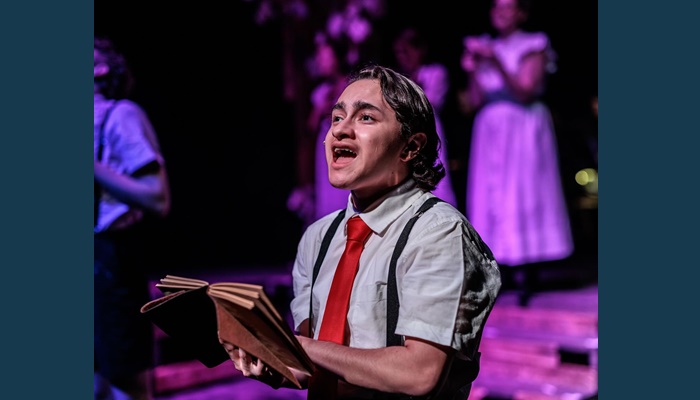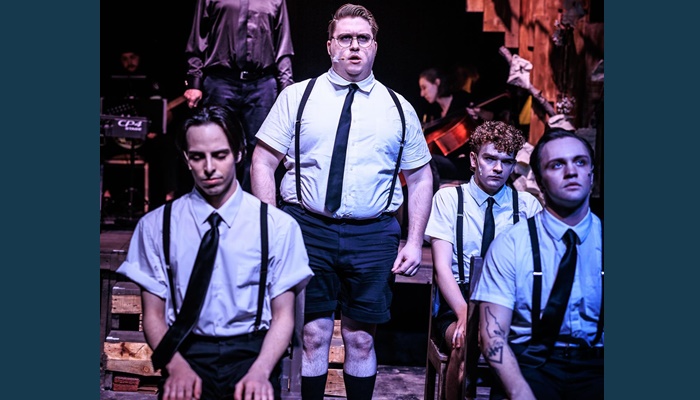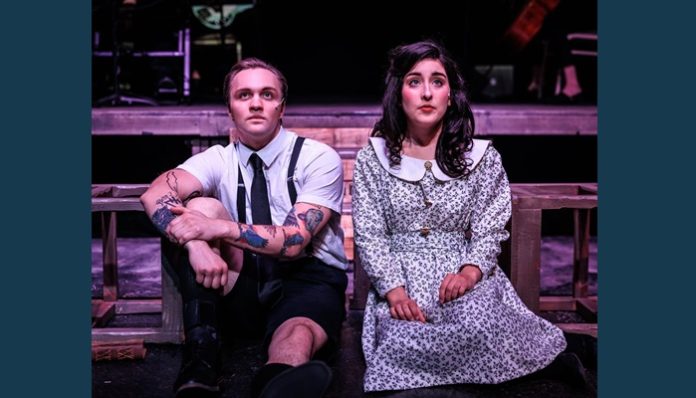SALT LAKE CITY, Utah, May 21, 2024 (Gephardt Daily) — “Spring Awakening” is one of those musicals, for me, that seems to either blossom or wither on the vine when fully produced.
The songs are brilliant, the story is gut-wrenching, and when the second national tour came through Salt Lake City in 2011, I was so excited to see it. In that instance, while I appreciated the talent onstage, it just didn’t move me. It played at Kingsbury Hall, which meant, of course, that the cast was pretty far away from the audience unless you were way down at the front, and I felt the passion that is supposedly inherent in the show just didn’t materialize.
Most theater-lovers are at least loosely acquainted with the plot of “Spring Awakening”; the rock musical is an adaptation of a controversial 1891 German play by Frank Wedekind. Set in late-19th-century Germany, the drama focuses on teenagers discovering the inner and outer tumult of burgeoning sexuality. The original play was banned because of its portrayal of such still-controversial subjects as masturbation, abortion, homosexuality, rape, child abuse and suicide. The musical tells the coming-of-age story while employing a score by rock musician Duncan Sheik, with book and lyrics by Steven Sater. “Spring Awakening” opened on Broadway in December 2006, won eight Tony Awards in 2007, and closed in January 2009 after an 888-performance run. In addition, the show was revived in 2015 on Broadway and garnered three Tony Award nominations, among other honors.
The musical was developed over the course of eight years, which included a workshop at Provo’s Sundance Theatre Lab in the summer of 2000. “Spring Awakening” also is noted for catapulting the careers of its young leads. “Glee’s” Lea Michele originated the role of Wendla Bergmann in the original Off-Broadway and Broadway runs, paired with Jonathan Groff, who originally played Melchior Gabor.

Fast forward to May 2024, and the fairly new Hart Theater Company is presenting the show at Lightree Studios at 740 W. 1700 South, which has three black box spaces. The one that the piece is presented in seats 50, with the action taking place on the floor and on a raised stage behind with the audience in raked seating. My husband and I were in the second row, putting us just feet from the actors when they were downstage. It’s a very intense piece — it comes with a parental discretion warning — and staging it in this intimate theater is the first brilliant decision of many for this production. The whole point of “Spring Awakening” is that the young people of the show are being corralled by their elders and, in this case, the smaller space is an analogy for this as the teenagers, like young wild horses, try to bust out of their metaphorical restraints. The more passionate and dark moments hit you like punches to the gut, and I left feeling pummelled by the highs and lows of the story.
The show fits nicely into Hart’s mission to produce fully mounted musical productions, as well as original works written by local artists and lesser-known plays and musicals that are not commonly staged in the Beehive State.
This second season has been has a strong one for the company. The season began with “Nine,” a musical based on Federico Fellini’s film “8½,” which was followed by an excellent production of Martin McDonagh’s “The Beauty Queen of Leenane.” A strategy that is serving the company well is to place some of the best of Utah’s theater talent at the helm of its shows and let them fly. In this case, the musical is directed and intimacy coordinated by Brooklynn Pulver Kohler, a local actor who toured nationally as Tracy Turnblad in “Hairspray” and who has made the transition into directing. Musical direction is by uber-talented actress and singer Ginger Bess, who has taught voice for over 20 years, and the gorgeous, modern-dance inspired choreography is by Izzy Arrieta, who is also a dancer and actor.
The show is beautifully cast, and with Pulver Kohler, Bess and Arrieta nurturing the actors’ raw talents as if they were blossoming flowers, everyone on stage shines brightly and freely, and their singing voices are simultaneously precise and passionate. I also had not seen the vast majority of the actors onstage before, which for me is like unwrapping a smorgasbord of wonderful presents. Leading the cast are two talents I was delighted by; Tearza Leigh Foyston, playing Wendla, has just returned to the U.S. after two years in China working for the Walt Disney Company. Her Wendla is gentle, quiet, understated; so when she unleashes her vocals, we feel all the energy that is simmering just under the surface. Foyston also gets to show off her comedic chops nicely in an early scene where her mother is explaining to her where babies come from.
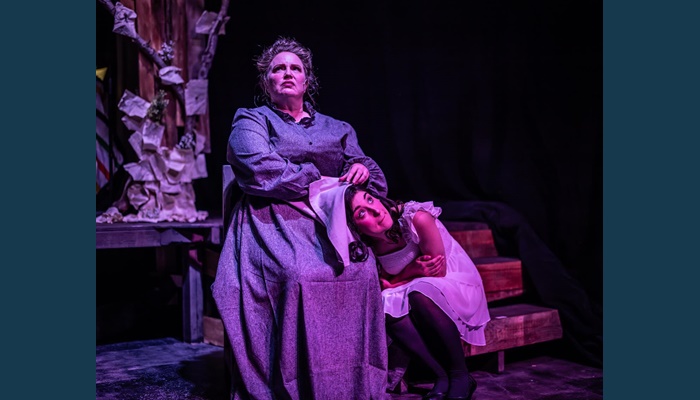
Maxx (with two X’s, that’s not a typo) Teuscher, playing Melchior Gabor, is an absolute comet of energy. His Melchior is edgy, intense, brooding; and he definitely has the XX-factor, with his low-key James Dean vibe, if James Dean sang. Foyston and Teuscher have a lovely chemistry together, and the tricky-to-stage intimacy scene is pitched just right here. This sequence has been slightly softened from the show’s Off-Broadway run, where consent from Wendla was a bit more ambiguous.
There’s a nice rapport, too, between Melchior and his best friend Moritz Stiefel, played by Geoff Beckstrand. The anxious and tortured Stiefel is probably the most challenging role in the show, and Beckstrand nicely shows his trajectory as the teen who feels he just can’t do anything right. There’s a lovely scene between him and Ilse Neumann, portrayed by Sam Torres, where she tells him she has found refuge at an artists’ colony after being abused at home, and they reminisce about childhood memories. Torres plays Ilse beautifully; she’s a child-woman who seems to yearn for earlier simpler times, as much as she also wants to be bohemian and sophisticated. Her monologue about spending the night passed out in the snow because she and the other artists got so drunk was one of the highlights of the show for me; Ilse seems simultaneously thrilled and appalled by her life.
The other young members of the cast also do an excellent job and, thank goodness, all at least appear to be in their teens. Erik J. McGinnis as Georg Zirschnitz particularly has a show-stopping singing voice. Playing all the adults, Karin Gittins and Sean J. Carter (double-cast with Matt Kohler) are also strong; Gittins, particularly, has an acting range that sees her chewing the scenery in some of the more comedic parts of the show but also turning in a beautifully understated performance in the more introspective moments.
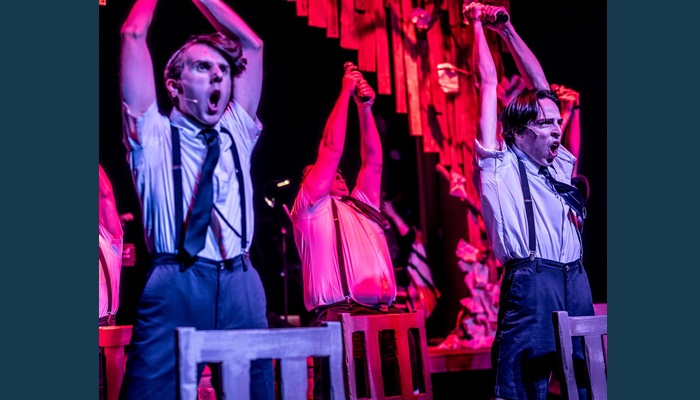
The production values also nicely highlight what our most talented local theater artists are capable of. Three of the songs have colors in their titles; “The Mirror-Blue Night,” “Don’t Do Sadness/Blue Wind,” and “The Song of Purple Summer.” It’s a really clever touch that both the lighting design and the costume design put heavy emphasis on bold colors; rich blues, purples, pinks and reds are used to highlight motifs and character arcs. The lighting design by Kyle Esposito is used to convey such themes as innocence, power, rebellion and despair. Emily Wells, who is the company co-founder and producer who also designed the costumes, did a lovely job here. The costuming elements that the show has become known for are present in all their glory; black shorts and suspenders with white shirts and black ties for the young male-presenting characters, and white dresses with long, black socks for the female-presenting. But as the characters’ journeys are revealed, the costumes slowly change color; this is most effectively used as Stiefel begins to come undone; we suddenly notice he is wearing a red tie, then red suspenders, then red socks.
The scenic design by Chase Ramsey is seemingly inspired by deconstructivism; there is a rudimentary arch made of crude wooden panels, like a flower arch you would see at a wedding, with three sets of wooden steps up to the raised playing area that look deliberately unfinished. Two bare trees have branches that are spiked with the pages of books, and there are strings of pages that stretch from the stage to the audience. Basic wooden chairs are used as other set pieces. The raised playing area is home to the five-piece band, who are all outstanding. A special shout out also needs to be given to the sound design by Grace Heinz; to get a perfect mix with a five-piece band and a cast of this size, all with individual lavalier microphones, cannot have been easy. The sound was loud enough to give a rock-concert vibe but also not uncomfortable.
At the very end of the show, the full cast enters wearing modern clothing, to sing about how although the adults may still call the shots, the seeds are already being planted for a new, open-minded, informed generation. As Pulver Kohler writes in her director’s note: “It is my hope that you watch this production and leave with strength and hope that our generations can be the ones to break the cycles. That breaking the tradition of generational trauma and cycles of abuse starts with all of us proactively making change. It starts in our homes, schools, churches, libraries and legislation.” While the show does highlight mature subject matter, I would actually recommend it for everyone in their later teens and older; particularly (fairly liberal) families with older teens. Its themes work to open up lines of communication; it is a vehicle for conversation and it sheds light on universal topics that are just as prevalent today as they were in the late-19th century.
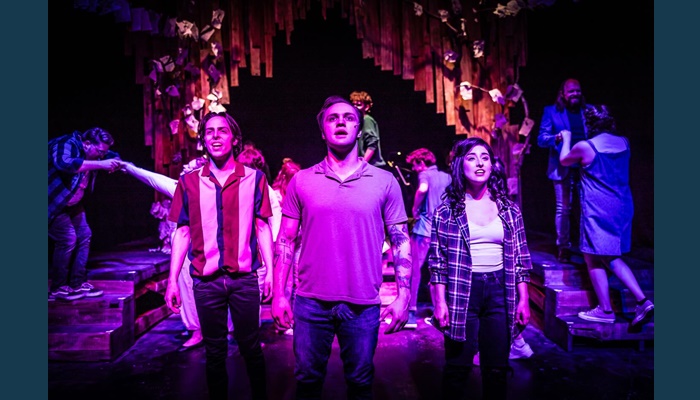
Hart Theatre Company is planning on making the space home for the foreseeable future, which I think is an excellent move. Though the company has not yet announced the next season, company co-founder Paul McGrew told me via email: “We can’t announce specific titles, but I can tell you that we plan to do shows about mental health, international conflict, and a young person of nobility. We are also planning to do our Christmas show, ‘The Other Wise Man,’ every year starting this December.”
“Spring Awakening” runs until June 2, Thursdays through Sundays, with shows at 7:30 p.m. Thursdays, Fridays and Saturdays, with a 2 p.m. show on Saturdays and a 4 p.m. show Sundays. Tickets are available here. For more information about Hart Theater Company, click here.

